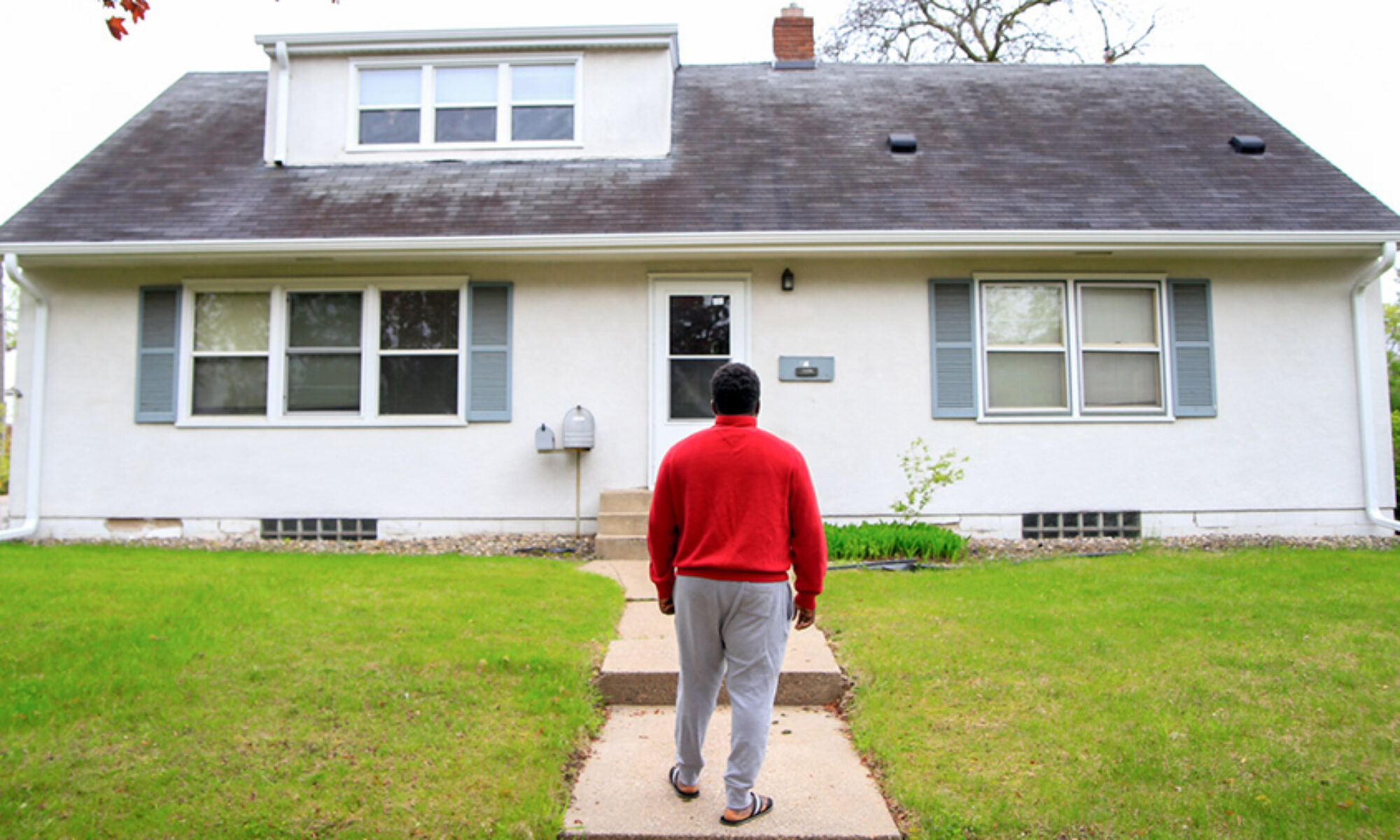
Shoutout to our featured staff, SJ Holsteen! SJ is our ministry leader here at Jonathan House.
I’m the IAFR Minneapolis-St. Paul Ministry Leader, which means that I’m responsible for guiding and implementing IAFR’s ministry in Minneapolis-St. Paul (including Jonathan House) through strategic planning, partnership, communication, and program and staff development. I also live at Jonathan House Frogtown, our site for women and children, so I’m blessed to share daily life with asylum-seeking individuals who have welcomed me with grace and kindness.
How did you first learn about the plight of asylum-seeking individuals in America?
In 2003, when I was a sophomore in college, I volunteered at a walk-in clinic for Médecins Sans Frontières (MSF-AZG) in Antwerp, Belgium. The clinic mainly served migrant populations, many who were in the process of seeking asylum. I learned about what made someone an asylum seeker as well as the many systemic barriers that they face during that process. That experience was very impactful for me, but I didn’t really think about asylum seekers’ experience in the US for many years.
Then, in 2016, I met Sarah Miller, IAFR’s US Regional Director, who was in the initial stages of launching an asylum-seeker housing ministry in the Twin Cities. My experience from Belgium came flooding back to me, and I suddenly wanted to learn everything I could about what the asylum process was like in the US. I learned a lot through my time with Sarah and IAFR, as well as through personal research and attending gatherings of individuals across the US and Canada who were supporting and walking alongside refugees, such as the Refugee Highway Partnership – North America.
How did you first get involved in Jonathan House?
It really started by meeting with Sarah Miller. When she first shared the vision of establishing safe, stable shelter for asylum seekers in the Twin Cities metro area, I had an immediate sense of affirmation in my spirit that it was something Christ was inviting me into, a path down which He was calling me to follow Him. I was living and working in western Wisconsin at the time, so initially I volunteered as I could in my free time – helping write fundraising campaigns and grants. By God’s grace, the funding came in to launch the first house, and at that point, Sarah invited me to be a volunteer member of the IAFR MSP team, helping welcome the first Jonathan House residents and be part of program development. In 2018, I decided to officially join IAFR as a full-time staff.
What’s something that everyone can do to help the cause of asylum-seeking individuals in the US?
When I first started engaging with Jonathan House, it struck me how little I actually knew about the asylum process in the US. So, I think reading articles, watching movies, or listening to stories about or by individuals who have sought asylum is a good way to give yourself a base knowledge about the many challenges of the asylum journey. I think learning about that journey opens people’s eyes to the injustice and dehumanization of a reality they might not even have been aware existed. When I visit churches to share about Jonathan House, I’m always encouraged how willing and open people are to learn and how ready they are to respond as they’re able with the radical love and welcome we know in Jesus Christ.
Another thing that US citizens can do is keep informed on national policies or laws that impact our asylum-seeking brothers and sisters. Asylum seekers are in a vulnerable position where they do not have access to democratic processes in a country that is making serious decisions that impact their futures. As an enfranchised citizen, you are able to use your voice to advocate for justice for asylum seekers to our government and your elected representatives.
Is there a statistic or fact that has surprised you concerning asylum seeking individuals?
In 2018, the United States received 254,300 new asylum claims, making us the leading recipient of new asylum claims in the world. (UNHCR Global Trends 2018). In the same year, 22,491 refugees came to the US through the federal refugee resettlement program (Migration Policy Institute). Asylum seekers are sometimes referred to as the “hidden refugee population,” and I think this statistic demonstrates that well… most people think of refugees as those who come to the US through resettlement, but each year a far greater number of forcibly-displaced individuals arrive in the US as asylum seekers and do not have access to the system of welcome and support that resettled refugees receive.
What is something asylum-seeking individuals have taught us?
One of my housemates told me once, “If there is life, there is hope.” That was very impactful for me. Because sometimes the past has left us with wounds, sometimes present life feels unbearable, and it can be hard to imagine that things will ever get better or that it is worth moving on. But my sister’s statement encouraged me and reminded me that God does not intend destruction or despair for us; He intends life and hope for us. My asylum-seeking friends have reminded me of this reality again and again, through their stories, their faith, their courage, and their love.
What languages do you speak?
English, French, and Spanish.
Any other line of work you’re in?
Nope.
Hobbies?
I like walking in the woods, reading, and visiting art museums.
Favorite sport?
Does eating donuts count as a sport?






